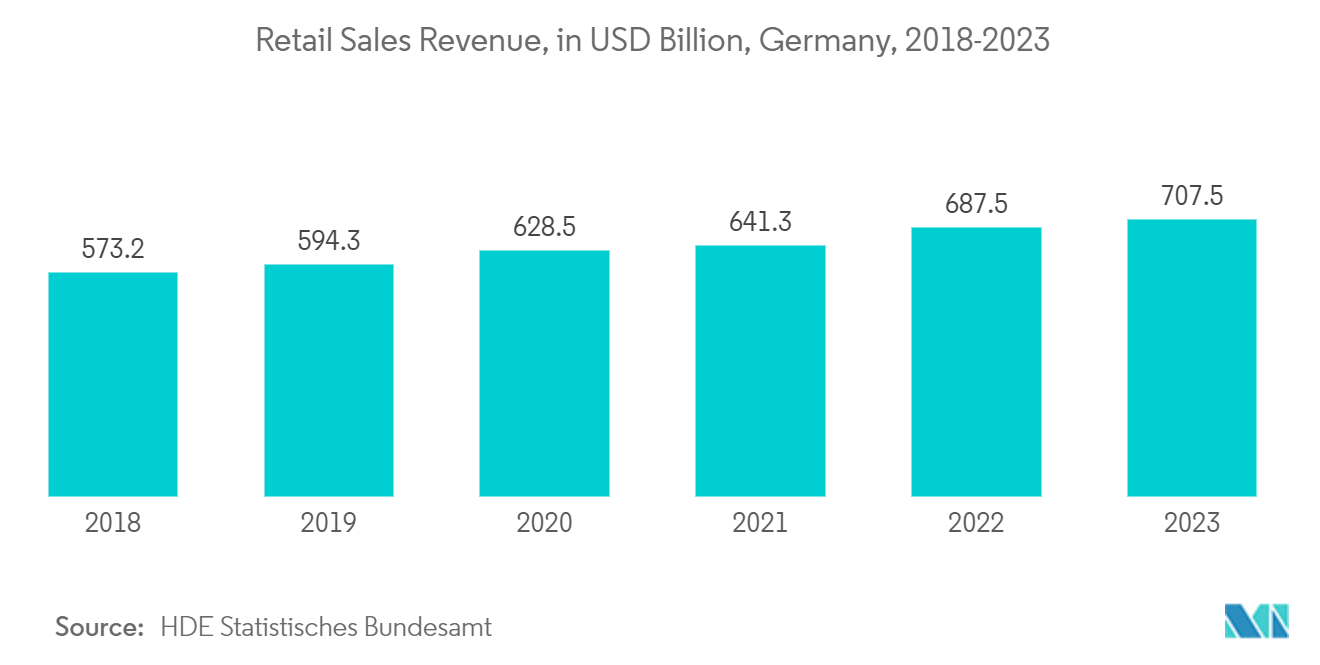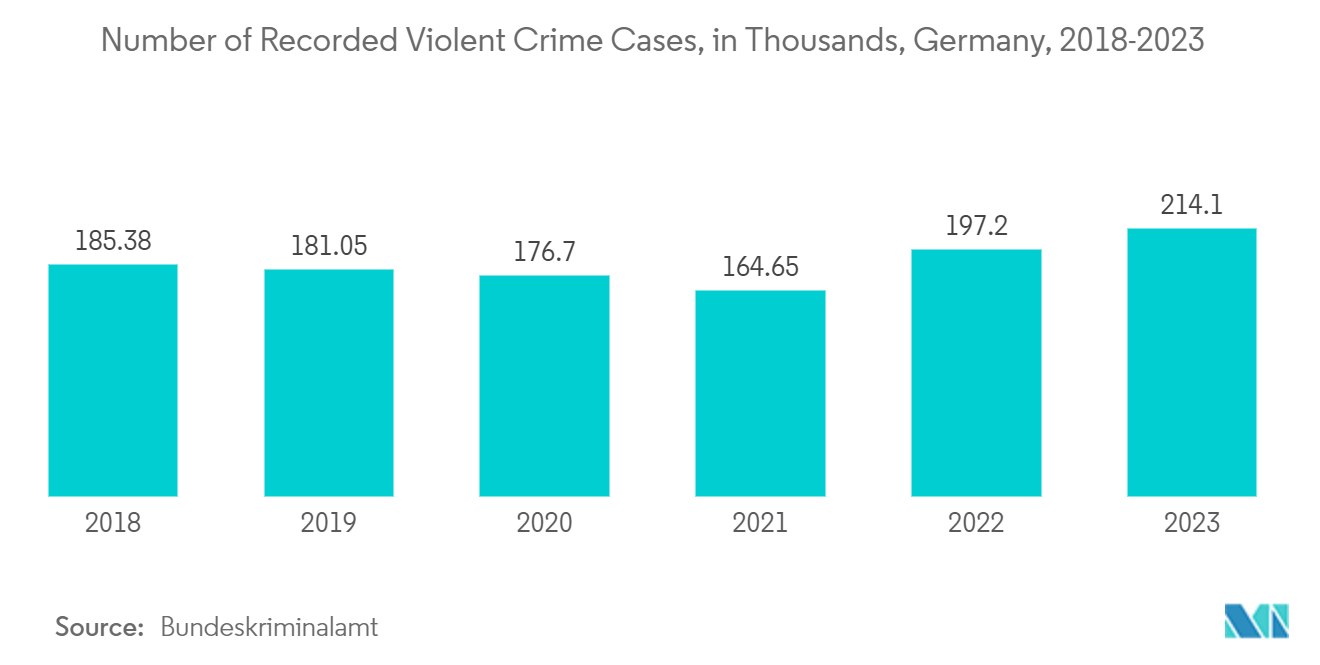Market Trends of Germany Surveillance Analog Camera Industry
Growing Number of Small- and Medium-sized Businesses in the Country Supports the Market's Growth
- Germany's economy is significantly supported by its small- and medium-sized enterprises (SMEs) despite the presence of globally recognized large corporations. SMEs constitute over 99% of all German businesses, totaling about 3.2 million entities. With the SME segment expanding, the analog surveillance camera market is anticipated to witness significant growth opportunities during the forecast period.
- In the current dynamic business environment, small business owners face numerous challenges, including securing their assets, employees, and customers. Surveillance systems play a critical role in addressing these security concerns. The primary advantage of video surveillance systems is their ability to deter unauthorized access and reduce theft. Strategically placed cameras can prevent potential burglaries and internal theft, thereby creating a secure environment for all stakeholders.
- Due to budget constraints, many small businesses prefer analog surveillance systems. The recent introduction of high-definition analog (HD Analog) cameras, with resolutions up to 8MP (4K Ultra HD) and features such as Wide Dynamic Range (WDR) and enhanced low-light performance, has expanded the applicability of analog systems. These modern HD analog cameras can utilize existing coaxial cables, providing a cost-effective upgrade solution.
- Retail and wholesale are the major sectors wherein the prominence of SMEs are significant. With the retail sales in the country increasing, the number of enterprises entering the retail sector is also increasing, creating a favorable ecosystem for the growth of the market studied as the demand for cost-effective surveillance solutions are usually higher in this segment. According to the German Retail Federation (HDE) and Statistisches Bundesamt, total revenue from retail sales in Germany, increased to EUR 650.3 billion (~USD 707.5 billion) in 2023, compared to EUR 526.8 billion (~USD 573.20 billion) in 2018.

Government Segment to Remain a Significant Demand Driver
- Germany has faced several terrorist attacks, notably in central Berlin, Paris, and Brussels. Coupled with a significant influx of migrants, these events prompted the German government to bolster its security measures. This included a comprehensive overhaul and enhancement of the nation's internal security. The heightened terror risks, mounting public safety worries, surging migration rates, and an expanding defense budget collectively set the stage for robust growth in the security market.
- Germany's regulations on surveillance cameras are significantly more stringent than many other countries. The country's increased focus on national security, driven by events such as Russia's invasion of Ukraine and the ongoing conflict, has accelerated the implementation of a new strategic plan.
- In June 2023, German Chancellor Olaf Scholz introduced the nation's first "National Security Strategy." This strategy aims to establish a more cohesive approach to foreign and security policies and ensure Berlin is better prepared for geopolitical developments.
- The recent years also witnessed a notable growth in violent crimes in Germany owing to which the emphasis of the government and public security authorities on implementing advanced security and surveillance technologies has been growing, creating a favorable ecosystem for the market's growth. For instance, according to Bundeskriminalamt, the Federal Criminal Police Office of Germany, in 2023, the number of violent crime cases recorded in Germany increased to 214.1 thousand, compared to 185.38 thousand in 2018.


